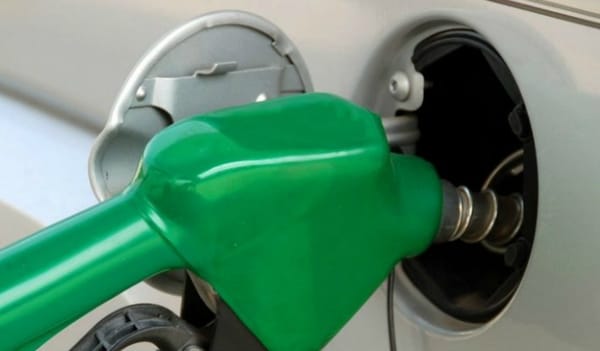5 Ways to Get Better Gas Mileage In Any Car

Everyone wants to get better gas mileage right?
No matter if the prices at the pump are up or down, filling up less often is always appreciated. I’ve heard there are ways to improve the gas mileage on my current car, a Honda Odyssey, so I set off to do some research. Here’s what I found.
The bottom line is that YES, it is possible to make small changes which will help you get better gas mileage. The first thing I started doing is just simply paying attention. How often do I fill up? Do I notice the gas indicator going down faster at times? And finally, how much am I spending a month on gas? I’m a firm believer that the first step to solving a problem is to acknowledge it. Once you have asked yourself these basic questions about your car’s fuel economy, try to do some of these tips below and see if your gas mileage improves.
Related: Does Your Car Really Need Premium Fuel?

5 Ways to Get Better Gas Mileage
1. Slow down.
I know. Not the most fun suggestion but it will help you get better gas mileage. I’m usually the mom screeching into carpool on two wheels so this one was a little hard for me. However, I did notice that when I kept my speed to 65 mph or under on the highway I got better fuel economy. Also, when I did less braking, and more gradual starts and stops, my gas mileage went up. Just try to do it when you can.

2. Make sure your tires are at optimal pressure.
I honestly don’t understand all the reasons behind this suggestion but I do know it works. Basically, if your tire pressure is low the rolling resistance or the amount of friction your tires create with the road, will lower your fuel efficiency. Not sure if your tires are inflated to the manufacturer’s recommendations? There should be a sticker on the inside of the driver’s side door jamb that lists optimal tire pressure. Many air pumps will display the pressure in your tires. Or, next time you get an oil change, ask the mechanic to check your tire pressure. You can also stop by just about any tire store and they should check them for you for free. Mine was low and tend to get low when the weather is colder. Now that I know this, I can be more conscious and pay attention.
3. Change your air filter.
When the mechanic at my last oil change recommended I change my air filter, I just assumed he was trying to upsell me. He told me that air filters should be changed at least once a year and they can have a big effect on the efficiency of the car’s engine and fuel usage. I Googled it and found out he was right. The air filter protects your car engine from all the dust and dirt in the air that constantly tries to seep into all those mechanical parts. If the filter is working properly, it will capture all the junk in the air and eventually get clogged up. Then your engine will have to work harder to compensate for the reduced airflow and that means using more gas. I found out this is one of those things I just had to trust that the mechanics (and Google) knew what they were talking about.

4. Lighten the load.
Do you have a roof rack you put on for your last vacation and haven’t taken it off? Maybe there is a bike rack on the back from your weekend family ride? Or do you carry 10 tons of sporting equipment in your trunk in case you need it? Ditch it all. Or at least get rid of it until you need it. The extra weight will lower your fuel economy.
5. Use your Eco setting.
Many cars today have fuel economy settings that you may be able to use to improve your gas mileage. I have a Honda Odyssey with an Eco setting. Basically, this means that when the Eco light pops on it means that I am optimally driving my car in terms of fuel economy. Just paying attention to this setting has helped me to stretch the time between fill-ups.
Check out this article on how cars are measuring fuel economy even better now.
Newer Honda vehicles have an ECON button that is specifically designed to help you save gas. Basically, it changes the way certain aspects of the vehicle operates including air conditioning, cruise control, throttle response, and even the transmission. You may notice slight changes when you’re driving but they shouldn’t be too cumbersome.
The Bottom line
If you want to get better gas mileage and save money on your commute, there is really no magic pill. However, if you try some of these tips (or even all five) you should be able to improve your fuel economy.

Have a thought or comment? Share it with us on social media! You can find us on Instagram, Facebook, Twitter and LinkedIn. And be sure to sign up for our email newsletter!
Categorized:Car Reviews
